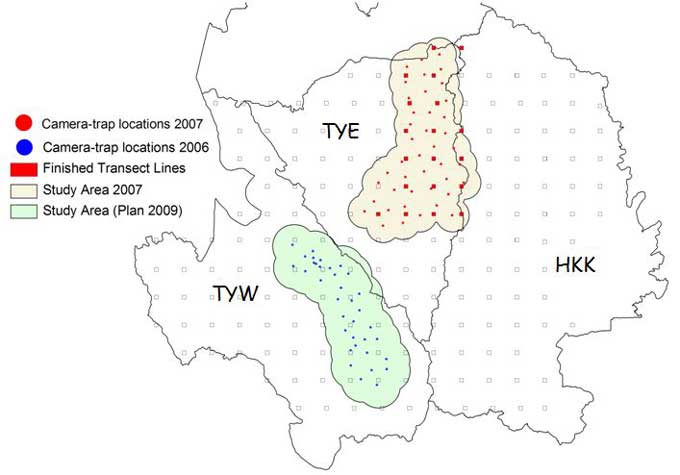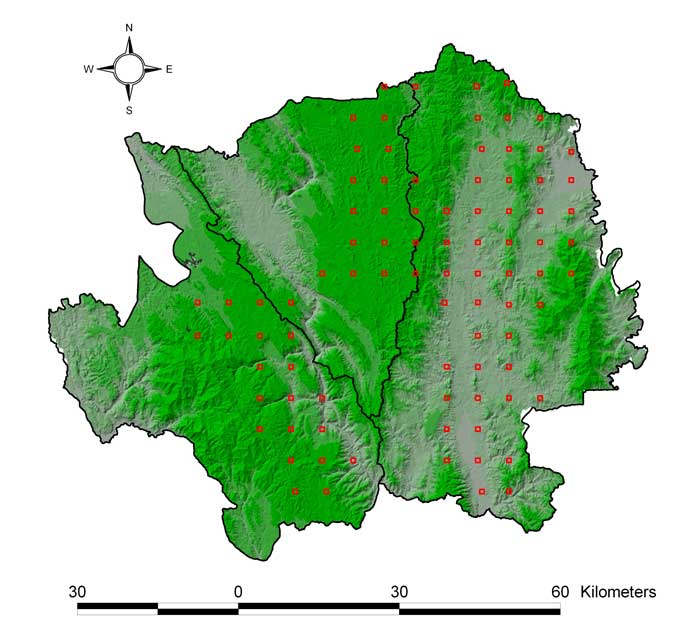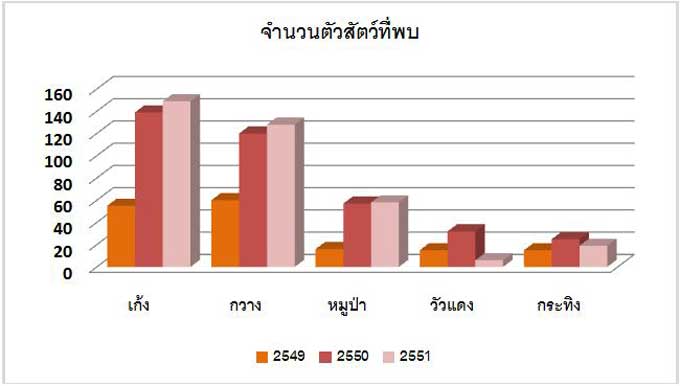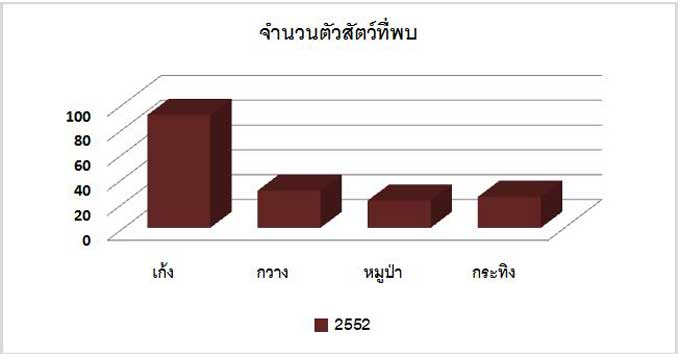The Tigers Forever project aims to increase tiger population by 50% over the next 10 years to ensure that tigers remain in the wild forever, therefore, we have been conducted researches on Tiger & Prey Population Monitoring in Western Forest Complex (WEFCOM), focusing the core area World Heritage site in Huai Kha Khaeng – Thungyai Naresuan Wildlife Sanctuary.
According to the success of tiger population monitoring in Huai Kha Khaeng Wildlife Sanctuary (HKK), Khao Nang Rum Wildlife Research Station (KNR) has been continuously collaborated with Wildlife Conservation Society (WCS) Thailand Program, therefore, expanded research area covering Thungyai Naresuan Wildlife Sanctuary as the same standard as of Huai Kha Khaeng Wildlife Sanctuary to fulfil site information of the core area of WEFCOM for further effective action plan. Due to tiger is a predator at the top of food chain. Preys (large mammals) are, therefore, the factor indicates its viable population.
Tiger’s Prey Population Monitoring
The monitoring focusing 5 main prey species of tiger that are banteng, gaur, sambar, muntjac, and wild pig in HKK, TYE and TYW. The survey research planned to conduct in square transect covering the same area decided for tiger population monitoring in camera trapping method in 2007-2008. Then tiger’s prey population monitoring started in Thungyai Naresuan East Wildlife Sanctuary (TYE) in 2007 and in Thungyai Naresuan West Wildlife Sanctuary (TYW) in 2009.
Objectives
1. To establish tiger and its prey monitoring system which will be use to evaluate the efficiency of management.
2. To expand research area at site nearby according to the success of tiger population monitoring in Huai Kha Khaeng Wildlife Sanctuary
3. To determine tiger’s prey population after removing villagers from Thungyai Naresuan East and Thungyai Naresuan West Wildlife Sanctuaries
Range of square transects was defined based from the range of camera trap set up which covering an area of HKK, TYE and TYW is approximately 1,034, 568 and 527 km2, respectively. A square transect of 800x800 m was established then. Square transects were randomly placed in the areas by using DISTANCE program. In addition, the period of square transect establishment is after camera traps were removed from sites.
Example map of line transect survey position within camera trap location in Huai Kha Khaeng, Thungyai Naresuan East and West Wildlife Sanctuaries

Show how to set square transect and marking distance by using tag along line transect
There two types of tag which represented distance every 100 meters
Square transect position which have been done in Huai Kha Khaeng - Thungyai Naresuan East and West Wildlife Sanctuaries

Tiger’s Prey Monitoring in Huai Kha Khaeng – Thungyai Naresuan East and West Wildlife Sanctuaries
After line transect establishment has done, the survey was conducted by two teams (two persons in each team). Along the survey observers will record both sign and direct sighting of tiger preys. According to research on tiger scats in HKK which is done by KNR found that main preys are gaur, banteng, sambar deer, muntjac and wild pig. However, bantengs are found only in HKK. During survey, skills in wildlife identification and in using field equipment are important. Herein, rangefinder, compass, GPS, binoculars and data form are used along the survey.
According to tiger’s prey density will be assessed from direct sighting only, therefore, observers have to survey quietly and dress properly otherwise animal will notice our coming.
Practice on rangefinder using and data form record
Overall Result
Tiger’s prey population density monitoring in HKK using line transect method has been conducted with 46 line transects in total during 2006 – 2008. Tiger’s prey (all five species) signs and sightings were records and were then used for density analysis in DISTANCE program. Found that mean density in each year is 6, 7 and 6 individual/km2, respectively. More information see the chart below.

Tiger’s prey population density monitoring in TYE using line transect method has been conducted with totally 19 line transects in 2007. Found mean density of all four main prey species (banteng inhabits only in HKK) which is 8 individual/km2.
Tiger’s prey population density monitoring in TYW using line transect method has been conducted with 16 line transects in 2009. Found mean density of all four main prey species which is 12 individual/km2.

In summary, tiger’s prey population monitoring was run successfully which results showed that prey density is adequate for tiger viable population. Besides, there is high abundance of tiger’s prey especially in Thungyai Naresuan Wildlife Sanctuary due to its large grassland landscape which is suitable for tiger’s prey (angulates) habitats. Moreover, the strengthening law enforcement throughout the area, thus all together leads to increasing of wildlife population further.
Next target
Tiger’s prey population monitoring has to work along with tiger population monitoring in camera trapping method in order to determine both tiger and its prey populations together, including determining their dynamic. Consequently, results will be used for further management. As mentioned above, there is still lack of prey long term data for comparing with tiger population dynamic. Therefore, further monitoring on tiger and its prey population is required. Furthermore, we will find for funding from other sources to support the implementation of the prey population monitoring where there has been set up camera traps. As research requires quite a lot of work, so it is slightly difficult to find research funding. However, in the future there will be a funding source to support, hopefully, to have the opportunity to study on prey populations coupled with tigers in Huai Kha Khaeng - Thungyai Naresuan East and West Wildlife Sanctuaries.